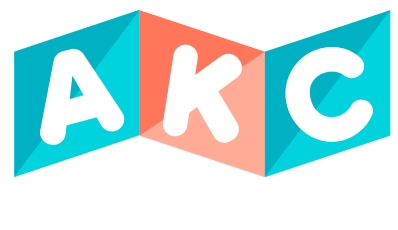Anxiety is a normal stress reaction. Everyone faces it at some time. So you don’t have to panic if someone suggests your kid is in anxiety. However, learning to control it is always good. It would save you from big troubles if you didn’t learn to control it.
Here, you can receive a load of information about anxiety and how to treat it. But first, let’s give you some facts about it.
Anxiety Facts & Statistics

According to the Anxiety and Depression Association of America (ADAA), anxiety is a mental disorder affecting 40 million adults every year. It is almost 19% of the total country’s population. Here we have more facts and statistics we grabbed from ADAA.
What is Anxiety?
Anxiety is a normal response to addressing stress. It may come and go without interfering with your everyday life. For example, some people fear appearing in a job interview. This type of anxiety is typical to have. It helps in keeping you motivated for what you are about to do.
A fear lasting longer than six months may be considered an anxiety disorder. This type of anxiety may stop you from doing things you like or must do. For instance, you may develop a disorder of entering an elevator, leaving the house, or crossing the road.
According to the American Psychiatric Association (APA), women are more prone to anxiety disorders.
What are Various Types of Anxiety Disorders?
The various types of anxieties may include:
Generalized Anxiety Disorder (GAD)
Anxiety that may last long, comes with frequent episodes, is difficult to control, and interferes with daily activities may lead to generalized anxiety disorder (GAD).
People with this disorder may be excessively concerned about money, health, family, work, or other issues. They are usually pessimistic even when there are no signs of bad things. It is challenging to overcome GAD.
You may confuse worry with GAD. However, GAD lasts long, whereas worry lives for a shorter period.
According to research, GAD affects 6.8 million adults in the US every year. Women are the prime victims of this disorder.
The cause of this disorder could be biological factors, family background, and life experiences.
Key Takeaways
- The fear that something terrible might happen, even when no sign exists.
- Anxiety that lasts longer than usual.
- Anxiety frequently shows its symptoms.
- Common concerns include money, health, family, work, or other issues.
- Common reasons may include biological factors, family background, and life experiences.
Read more: All About Colic Every Parent Must Know
Panic Disorder (PD)
Panic disorder can be closely related to GAD in that it is the sudden attack of intense fear triggering several physical reactions, such as fear of loss of control or death, rapid, pounding heart rate, sweating, etc.
Many people have such sudden attacks once or twice in their life. If it lasts longer, then it is commonly known as panic disorder.
Panic attacks are not endangering, but you must seek medical advice as soon as possible. Getting timely treatment will help prevent relapses. You may also consider engaging in physical activities if not planning to seek medical assistance.
Key Takeaways
- Sudden episodes of intense fear lead to severe physical reactions.
- Frequent episodes are generally known as panic disorders and can be dangerous.
- Major factors behind this distress may include genetics, significant stress, and traumatic events.
- After effects of this attack may lead to an increase in alcohol intake, suicidal thoughts, and avoidance of social gatherings.
- Treatment for panic attacks includes medical assistance or developing a habit of getting into physical activities.
Social Anxiety Disorder
Social anxiety disorder (aka social phobia) causes extreme fear in social settings. Symptoms may include trouble talking to people, meeting new people, and attending social gatherings. They also do not like people judging them.
Social anxiety disorder is different than shyness. Shyness is usually short-lived and does not disrupt one’s life.
If you or your kid has this disorder, it may get challenging to work with colleagues, attend school, and develop relationships with strangers.
Social anxiety disorders commonly include bullying, family conflict, and sexual and emotional abuse. Children are likely to inherit this anxiety from parents having this disorder.
While there is no test to diagnose this disorder, your healthcare provider will ask about the possible symptoms and treat you with appropriate methods. Breathing and relaxing is the best way to treat this disorder. It is called cognitive behavioral therapy.
The medical practitioner may also suggest participating in social situations so you may overcome this disorder. This treatment is called exposure therapy.
Besides several therapies, experts suggest avoiding caffeine intake, getting plenty of sleep, and FDA-approved medications.
Key Takeaways
- Social anxiety disorders occur when you fear social settings.
- You feel reluctant to join social gatherings and meet new people.
- Common reasons for this disorder may include bullying, family conflict, and sexual and emotional abuse.
- Cognitive behavioral and exposure therapy are a few methods to treat this disorder.
- Avoiding caffeine and getting plenty of sleep may also help reduce this disorder.
Read more: 10 Reasons to Cook with Kids
Specific Phobias
Specific phobias occur when a person faces unreasonable fear of objects or situations. Such situations are not life-threatening but may provoke anxiety and avoidance. Specific phobias are generally long-lasting and may cause intense physical and psychological reactions. The disorder may also lead to losing the ability to function normally.
The phobia is prevalent and may affect your daily life. Treat it with accurate therapies to get rid of this disorder.
People inherit this phobia because of negative experiences, unpleasant environments, and brain functioning. If not treated, it may lead to social isolation, mood disorders, abuse of drugs or alcohol, and even suicidal tendencies.
Key Takeaways
- Long-lasting fear of objects or situations.
- May provoke anxiety and avoidance.
- May also lead to losing the ability to function normally.
- The phobia may come from negative experiences, a bad environment, and weakening brain functioning.
- Consider psychological assistance when found in a phobia.
Obsessive-Compulsive Disorder (OCD)
Obsessive-compulsive disorder (OCD) is a pattern of unwanted thoughts and fears leading to repetitive behavior. These compulsions may incline with daily activities. Fighting this disorder is not easy. Struggling with it may only increase your distress and anxiety.
Fear of getting contaminated by germs is an example of OCD. Fighting uncertainty is also an example of OCD. The extreme need for things in order also comes under this anxiety type.
Do not confuse the term with a perfectionist. A perfectionist is someone who requires flawless results or performance. At the same time, an OCD person is overly worried about real-life problems, such as unnecessarily washing hands.
While it does not sound dangerous, it may lead to severe consequences. Contacting an expert is always the best way to start the treatment.
Key Takeaway
- OCD is a pattern of unwanted thoughts leading to repetitive behavior.
- Struggling with OCD may increase distress and anxiety.
- Fear of getting contaminated by germs is one example of OCD.
- OCD is not dangerous but may lead to suicidal thoughts and behavior.
Post-traumatic Stress Disorder (PTSD)
Post-traumatic stress disorder (PTSD) is a disorder that is connected with a terrifying event. Symptoms of PTSD may include flashbacks, nightmares, severe anxiety, and uncontrollable thoughts about the event.
People with PTSD find it challenging to adjust and cope with the environment. The only way to become more contended is by getting proper treatment.
Sometimes it may get crucial to identify if a person is going through post-traumatic stress disorder.
PTSD symptoms may include unwanted distressing memories, avoiding places, activities, or people, negative thoughts about yourself, other people, or the world, and trouble sleeping.
Talk to a doctor if you have disturbing thoughts and feelings about a traumatic event for more than a month. Call a suicide hotline number if you are having suicidal thoughts.
Key Takeaways
- Distress from a terrifying event
- Symptoms may include flashbacks, nightmares, or severe anxiety.
- PTSD symptoms can be categorized into four types: intrusive memories, avoidance, negative changes in thinking and mood, and changes in physical and emotional reactions.
- Seeking medical assistance under challenging situations is the only way to stay from further disrupting your life.
Read more: 10 Potty Training Tips from Experts and Parents
Conclusion
Every anxiety type is different from the other, even when they may sound similar. Similarly, experts may treat patients with anxieties differently based on their situation. However, if you prefer natural treatment, better sleep, meditation, staying active, eating healthy, avoiding alcohol and caffeine, quitting smoking, sticking around optimistic people, and nature traveling are the best ways to adopt and free yourself or your loved one from any anxiety type.
If you need personal therapy for your child, consider contacting American Kids Care (AKC). We have doctors to relieve your child from any distress they may be facing.





